Tunisia’s UNESCO sites offer a compelling journey through time, revealing layers of history and culture that reflect the country’s diverse heritage. Over five days, travelers can explore the ancient ruins of Carthage, marvel at the stunning mosaics of El Jem’s Colosseum, and discover the spiritual significance of Kairouan. Each location tells a story, interweaving Punic, Roman, and Islamic influences that shaped Tunisia’s identity. As they navigate these historical wonders, visitors also encounter the vibrant local culture and breathtaking landscapes, setting the stage for an unforgettable adventure that leaves many wondering what lies beyond the next site.
This experience made our list of the 5 Best Tours In Kairouan.
Key Points
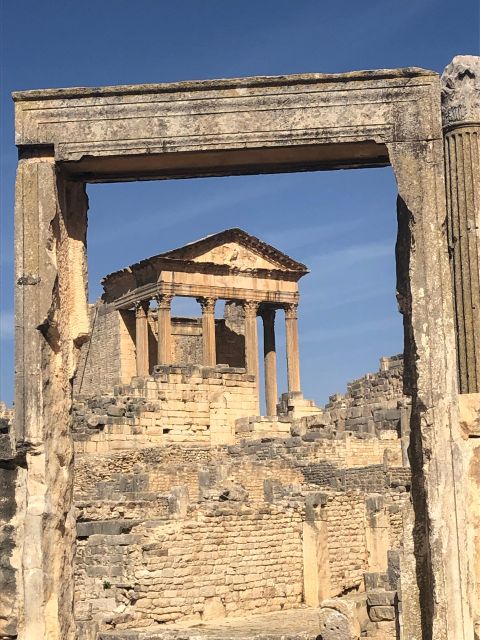
- Experience the historical richness of Carthage, exploring its archaeological sites and panoramic views on Day 1.
- Discover the vibrant culture of Tunis, visiting the Medina, Grand Zaytouna Mosque, and Bardo Museum on Day 2.
- Marvel at the grandeur of El Jem’s amphitheater and Kairouan’s Great Mosque, showcasing Roman and Islamic architecture on Day 3.
- Explore Oudhna’s Roman ruins, aqueduct, and scenic landscapes while enjoying traditional Tunisian cuisine on Day 4.
- Visit the charming village of Kelibia and the Punic site of Kerkouane, concluding with fresh seafood delights on Day 5.
Overview of UNESCO Sites

Tunisia’s UNESCO sites offer a captivating journey through the country’s rich historical tapestry, showcasing the remarkable influences of various civilizations from the ancient Punic era to the Ottoman period.
Each site tells a unique story, reflecting the architectural brilliance and cultural depth of its time.
Visitors can explore the ruins of Carthage, where the echoes of a once-great city resonate through its ancient ports and baths.
The mesmerizing mosaics of El Jem’s Colosseum reveal the grandeur of Roman engineering, while the sacred spaces of Kairouan highlight the importance of Islamic heritage.
These sites not only preserve Tunisia’s past but also invite travelers to experience the vibrant blend of history, art, and tradition that continues to shape the nation today.
You can also read our reviews of more tours and experiences in Kairouan.
Day 1: Carthage and Surroundings

The exploration of Carthage and its surroundings reveals the remnants of a powerful civilization that shaped the Mediterranean world, showcasing remarkable archaeological sites that echo its storied past.
Visitors can wander through the ancient Tophet, where sacred burial practices were once held, and marvel at the impressive Punic ports.
The Antonius Baths, with their grand structure, highlight the city’s Roman influence, while Byrsa Hill offers panoramic views of the coastline.
The Cisterns of la Malaga illustrate the ingenuity of the Punic engineers.
Just a short distance away, Sidi Boussaid enchants with its vibrant blue-and-white architecture, inviting travelers to explore art galleries and the elegant Ennejma Ezzahra palace.
A delicious Tunisian lunch awaits in La Goulette, completing a perfect first day.
Day 2: Exploring Tunis
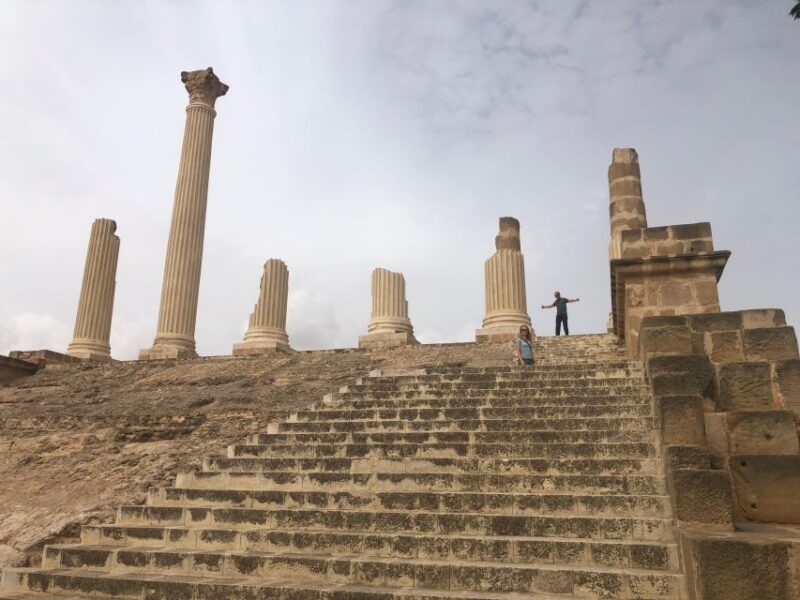
Exploring Tunis offers a captivating journey through its rich history and vibrant culture, where ancient medinas and modern life intertwine seamlessly.
The heart of the city, the Medina of Tunis, boasts narrow alleyways filled with colorful souks, where visitors can find everything from spices to handcrafted goods.
The grand Zaytouna Mosque stands as a testament to the city’s Islamic heritage, while the bustling central market invites travelers to savor local flavors.
A visit to the Bardo Museum reveals exquisite mosaics and artifacts from Tunisia’s past, showcasing its Punic and Roman influences.
The Royal Palace of Ksar Said, with its opulent architecture, offers a glimpse into the lives of Tunisia’s former rulers, enriching the day’s exploration.
Day 3: El Jem and Kairouan
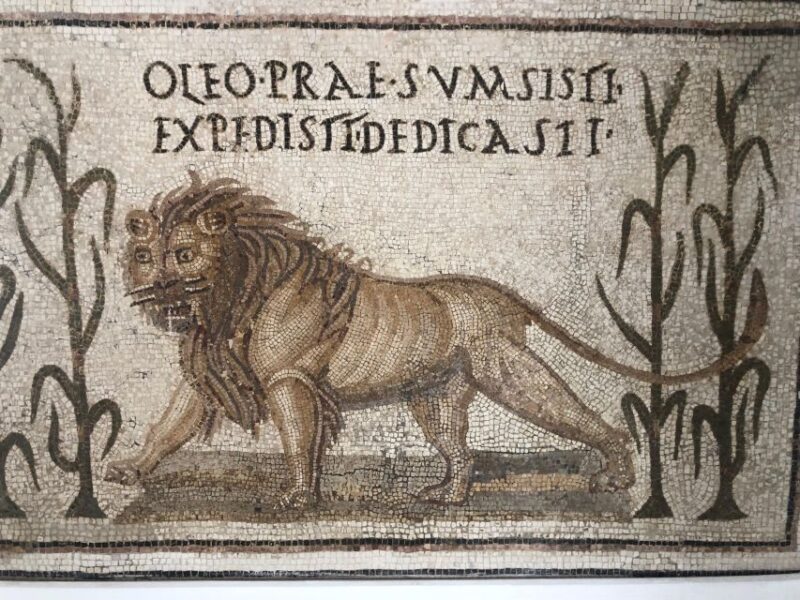
On Day 3, travelers explore the grandeur of El Jem and Kairouan, where remarkable ancient structures and rich cultural heritage await to be uncovered. El Jem, famed for its stunning Roman amphitheater, captivates with its architectural brilliance. The Archaeological Museum nearby showcases artifacts from the region’s storied past. In Kairouan, visitors marvel at the Great Mosque, an architectural gem, and appreciate the intricate Bassins, significant water reservoirs from centuries ago.
| Site | Highlights |
|---|---|
| El Jem | Colosseum, Archaeological Museum |
| Kairouan | Great Mosque, Bassins |
| Architecture | Roman, Islamic influences |
| Culture | UNESCO recognition, historical significance |
Day 4: Oudhna and Zaghouan
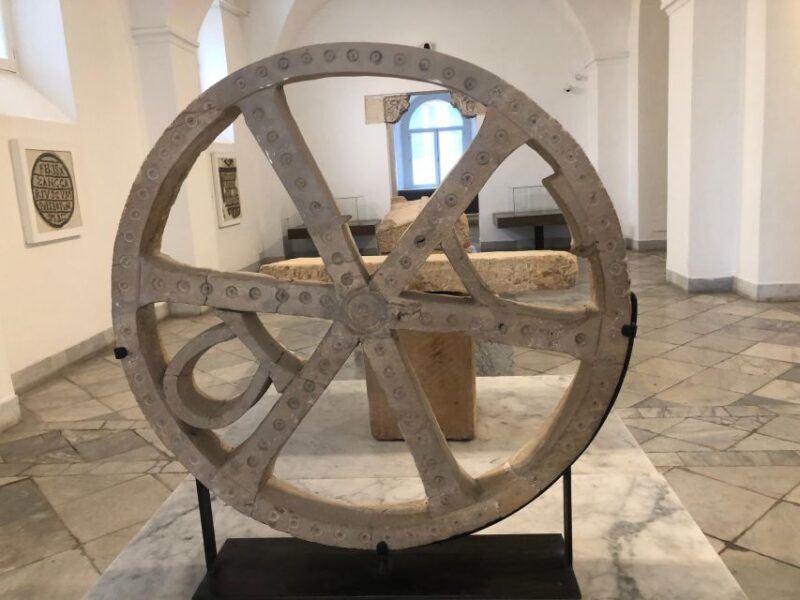
Day 4 immerses travelers in the ancient wonders of Oudhna and Zaghouan, where remnants of Roman engineering and stunning landscapes reveal Tunisia’s rich historical tapestry.
Oudhna showcases a remarkable Roman aqueduct, majestic colosseum, and the impressive Capitol, along with beautifully preserved public baths and intricate mosaics from the Laberii villas. Each site offers a glimpse into the grandeur of ancient life.
After exploring, visitors can enjoy a delicious lunch at local spots like Elixir bio farm or Dar Zaghouan, savoring authentic Tunisian flavors.
Meanwhile, the nearby Zaghouan region enchants with its picturesque landscapes and the famous Zaghouan mountain, known for its clear springs.
This day perfectly balances history and natural beauty, leaving travelers in awe.
Day 5: Discovering Cap Bon
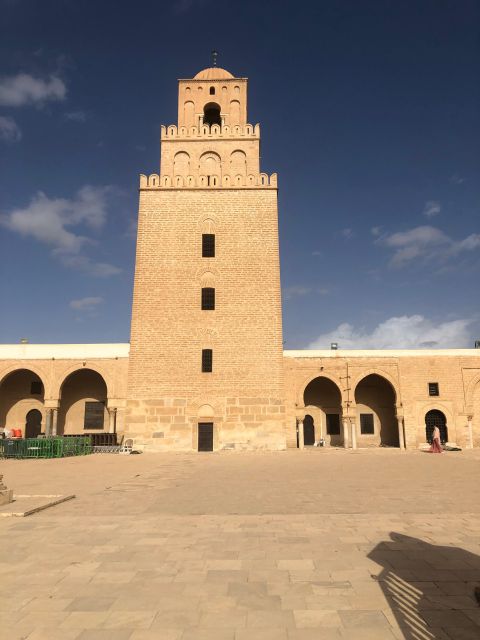
Cap Bon captivates visitors with its stunning coastal scenery and rich cultural heritage, offering a perfect blend of history and relaxation.
On Day 5, travelers explore the charming village of Kelibia, famous for its ancient fort overlooking the Mediterranean. The vibrant central market serves up mouthwatering seafood and grilled dishes, making it a culinary delight.
Kerkouane, a UNESCO-listed Punic archaeological site, showcases the remnants of a once-thriving civilization, inviting guests to wander through its ruins and imagine daily life centuries ago.
Visitors can enjoy:
- Stunning coastal views at Kelibia Fort
- Fresh seafood delicacies from local vendors
- Insightful exploration of Kerkouane’s archaeological significance
Day 6: North West Adventures
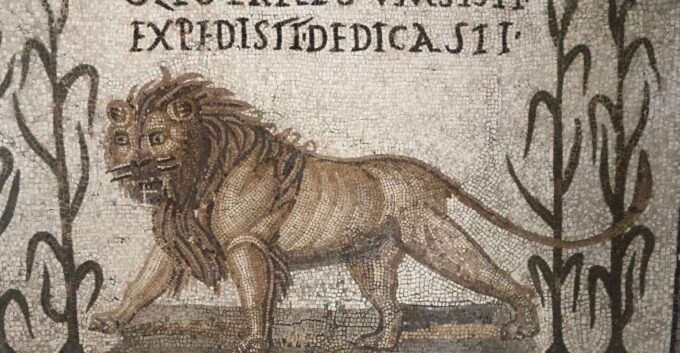
As travelers venture into the North West, they uncover a region rich in history and breathtaking landscapes, starting with the enchanting village of Testour, known for its Andalousian mosque that reflects the area’s diverse cultural heritage.
Next, they head to Dougga, where the impressive Roman Theatre stands as a testament to ancient architectural prowess. Here, visitors can explore the grand Capitol, the bustling Forum, and the well-preserved Roman baths, each site narrating stories of a vibrant past.
The Lybico-Punic mausoleum adds a unique touch, showcasing the intricate blend of cultures. This adventure through North West Tunisia not only delights the senses but also deepens one’s appreciation for the rich tapestry of history woven into this remarkable landscape.
Cultural Significance of Tunisia
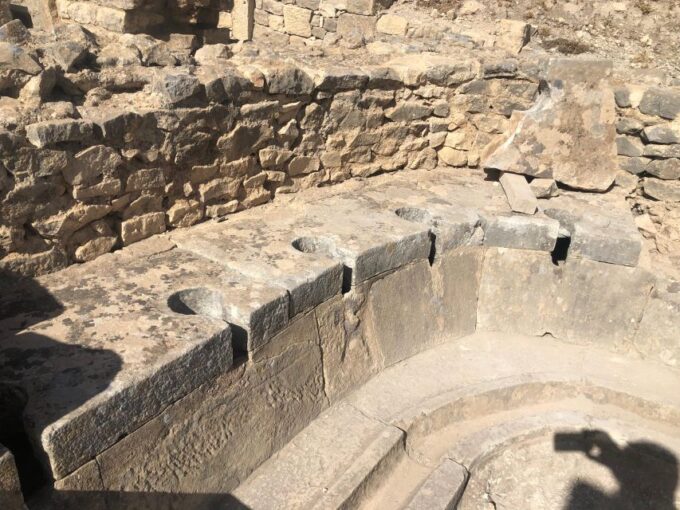
Tunisia’s cultural significance lies in its vibrant tapestry of influences, blending ancient civilizations with Islamic heritage, which together create a rich historical narrative that continues to shape its identity today.
From the Phoenicians to the Ottomans, each era has left an indelible mark, evident in the country’s architecture, art, and traditions.
Visitors can explore:
- The ancient ruins of Carthage, showcasing Punic and Roman ingenuity.
- The stunning mosaics in the Bardo Museum, reflecting Tunisia’s artistic legacy.
- The intricate designs of Kairouan’s Great Mosque, a testament to Islamic architectural brilliance.
These elements not only highlight Tunisia’s diverse cultural landscape but also foster a deep appreciation for its historical journey, making it a captivating destination for travelers.
Frequently Asked Questions
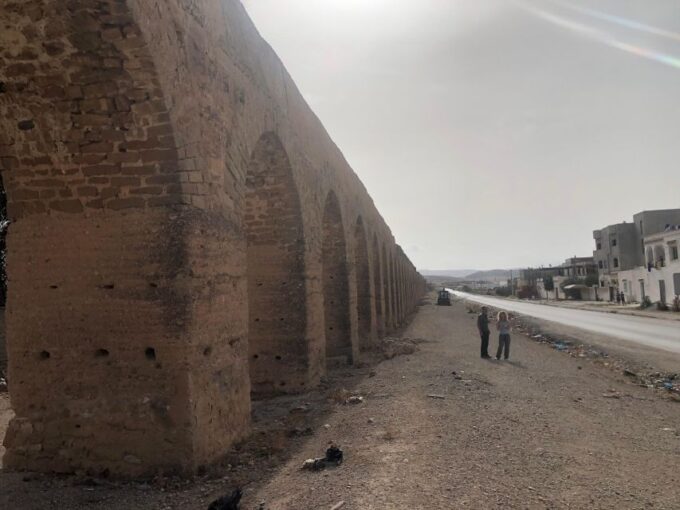
What Is the Best Time of Year to Visit Tunisia?
The best time to visit Tunisia is during spring, from March to May. Tourists enjoy pleasant temperatures, vibrant blooms, and fewer crowds, making it ideal for exploring the country’s rich history and stunning landscapes.
Are There Any Age Restrictions for Participating in the Tour?
Participants of the tour enjoy flexibility regarding age restrictions. Most activities cater to diverse age groups, ensuring everyone can appreciate Tunisia’s rich heritage while exploring its historical sites and vibrant culture together.
What Should I Pack for a Week-Long Trip to Tunisia?
For a week-long trip to Tunisia, she should pack lightweight clothing, comfortable walking shoes, sunscreen, a hat, and a reusable water bottle. A light scarf will also help with modesty during visits to religious sites.
Is Transportation Included in the Tour Package?
The tour package includes transportation, ensuring travelers don’t have to worry about navigating on their own. They’ll enjoy seamless transfers between destinations, allowing them to focus on exploring Tunisia’s rich history and culture.
Are There Vegetarian or Vegan Food Options Available During the Tour?
During the tour, participants discover diverse culinary options. Local eateries often offer vegetarian and vegan dishes, showcasing Tunisia’s rich flavors and ingredients. Travelers can savor delightful meals that cater to their dietary preferences throughout the journey.
Recap
In just five days, travelers can uncover Tunisia’s rich tapestry of history and culture through its six UNESCO sites.
From the ancient whispers of Carthage to the awe-inspiring mosaics of El Jem, each site reveals the nation’s diverse influences.
As they explore the vibrant landscapes and indulge in local cuisine, visitors gain a deeper appreciation for Tunisia’s unique heritage.
This journey not only showcases architectural marvels but also invites an intimate connection with the heart of Tunisian culture.
You can check if your dates are available here: